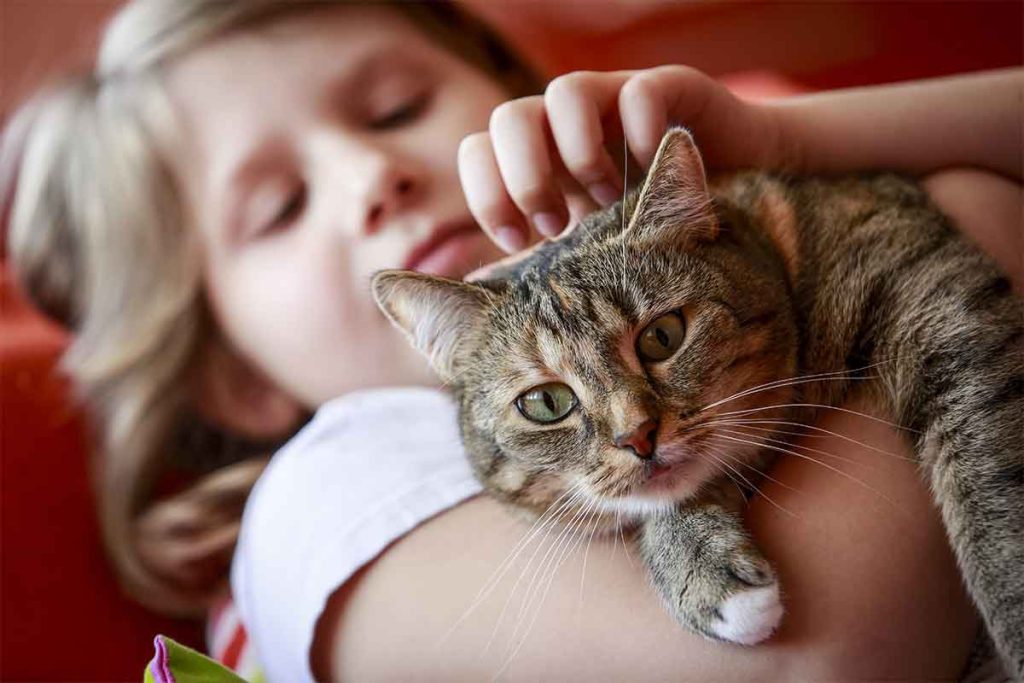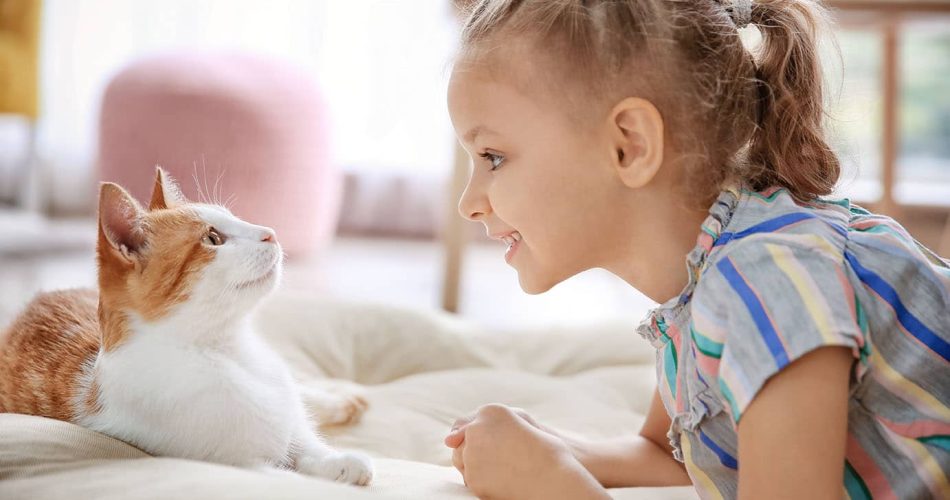Pets, especially cats, can play a significant role in the emotional development of children. The bond between children and their feline companions can teach valuable life lessons, foster empathy, reduce stress, and help children develop emotional intelligence. In this article, we will explore how cats can positively impact a child’s emotional well-being and provide crucial developmental benefits.
Teaching Empathy and Responsibility
One of the most significant ways that cats help with emotional development is by teaching children empathy and responsibility. When children care for a cat, they learn how to consider the needs of another living being. Feeding, grooming, and ensuring the cat’s well-being require attention, and children are often excited to take on these tasks. As they perform these responsibilities, they develop a sense of care and concern for others.
Empathy is an important emotional skill, and interacting with a cat can help children understand the feelings of others. Cats communicate their emotions through body language, and children often become adept at recognizing when their cat is happy, anxious, or upset. This observation teaches children to be more aware of emotions, not just in animals, but also in humans.
Providing Comfort and Emotional Support
Cats are often known for their soothing presence, and many children find comfort in their furry friends. When a child is feeling sad, anxious, or overwhelmed, a cat can provide emotional support. The act of petting a cat or simply sitting with them can be calming and reduce feelings of stress or loneliness. Cats’ gentle purring has even been shown to lower blood pressure and promote relaxation, which can be especially beneficial during difficult moments.
The companionship of a cat can also ease feelings of isolation. For children who may struggle to make friends or are shy, having a cat to confide in can be a source of comfort and security. The unconditional love and non-judgmental presence of a cat can help children feel safe and supported, even when they might be going through challenging emotional times.

Teaching Emotional Regulation and Self-Control
Interacting with a cat also helps children practice emotional regulation and self-control. Cats, unlike dogs, do not always seek constant attention and may sometimes need their space. This teaches children the importance of respecting boundaries and recognizing that not every interaction requires immediate engagement. Learning how to approach a cat gently and wait patiently for affection helps children develop patience and self-discipline.
Furthermore, cats can help children deal with frustration. If a child is having a hard time getting a cat to play or bond with them, they must learn to remain calm and not react impulsively. This kind of interaction encourages children to manage their emotions and develop coping strategies when they don’t get what they want immediately.
Building Confidence and Independence
For children, caring for a cat can be a rewarding experience that boosts self-esteem and confidence. As children take on the responsibility of feeding, cleaning, and playing with their cat, they develop a sense of accomplishment and pride. This sense of success can transfer to other areas of their lives, encouraging them to take on more challenges with confidence.
Cats also teach children how to be independent. Unlike some pets that require constant attention, cats are more self-sufficient and may spend time alone or entertain themselves. Children can learn how to care for their cat without being overly reliant on others for help. This fosters a sense of independence and encourages children to be responsible and self-reliant.
Improving Social Skills
For children who struggle with social skills or are shy, having a cat can serve as a bridge to building better interactions with others. Having a shared interest in a pet can help children connect with peers who also love animals. They may bond over their mutual care for cats and gain a sense of belonging in social circles.
Moreover, children who are empathetic and emotionally intelligent tend to do better in social situations. By learning to care for a cat and understanding the emotions of an animal, children can apply these skills when interacting with others. This practice helps them navigate social challenges, communicate more effectively, and build stronger relationships with their peers.

Reducing Anxiety and Stress
Cats are often used in therapy settings because of their calming effect on individuals, including children. The presence of a cat can help reduce anxiety and promote a sense of tranquility. Children who suffer from separation anxiety, stress, or general emotional unrest can benefit from the soothing nature of a cat.
Petting a cat can trigger the release of oxytocin, a hormone associated with bonding and relaxation. This chemical response has been shown to lower levels of the stress hormone cortisol. For children who experience high levels of anxiety or emotional turmoil, having a cat around can provide a much-needed outlet for stress relief.
Learning Compassion Through Loss
While it’s never easy, experiencing the loss of a pet can be an important lesson in emotional development. Cats, like any other living beings, have a limited lifespan, and children may eventually have to face the grief of losing a beloved pet. While this experience can be heartbreaking, it can also teach children about the complexities of life and death.
Dealing with the loss of a pet helps children process grief, learn how to express their emotions, and understand the importance of cherishing the time they have with loved ones. This process can ultimately make them more resilient and capable of coping with future emotional challenges.
Encouraging Active Play and Exercise
Physical activity plays an important role in a child’s emotional development, and cats can help encourage this. Interactive play with a cat, such as using toys or engaging in games that mimic hunting behaviors, allows children to be active and involved. This activity not only promotes physical health but also stimulates mental development, as children develop strategies and problem-solving skills during playtime.
Furthermore, spending time outdoors with a cat, especially in the case of cats who enjoy going for walks or exploring safe, enclosed spaces, encourages children to connect with nature and enjoy physical activities. These experiences can boost a child’s mood and improve their overall well-being.

Conclusion
The emotional development of children is influenced by many factors, and one of the most significant is the companionship of pets. Cats, with their calming presence, independence, and ability to foster empathy and responsibility, play a unique role in shaping a child’s emotional growth. Through the bond they share with their feline friends, children can learn valuable life skills such as emotional regulation, compassion, and social interaction, all of which contribute to their overall well-being.
